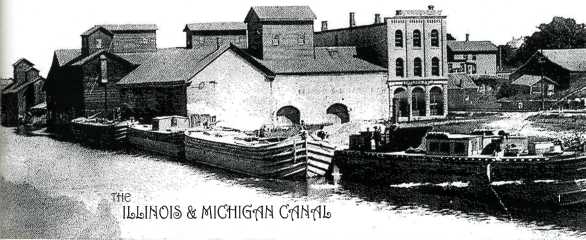 |
Home | Search | Browse | About IPO | Staff | Links |
 |
Home | Search | Browse | About IPO | Staff | Links |
|
Introduction to Illinois History Teacher Volume 16: 2—The Illinois and Michigan Canal  
This volume of Illinois History Teacher documents the importance of the Illinois and Michigan Canal to Illinois history. Connecting the waters of the Illinois River with those of Lake Michigan (hence the name) the I and M Canal played a central role in the development of nineteenth-century Illinois, yet many people are unaware of the myriad ways in which the canal shaped our state. The sesquicentennial celebration of the canal's opening in 1998 raised awareness of this important story, but mention the Illinois and Michigan Canal to one hundred Chicagoans and you are apt to get ninety-nine blank looks. There are a variety of reasons for the canal's relative obscurity. The single best published source on the canal is nearly a century old, published at a time when boats still plied the canal's waters: James W. Putnam, The Illinois and Michigan Canal (1918). The I and M Canal operated for a mere five years before a new and revolutionary technology, the railroad, paralleled its route. Some have argued that the canal was obsolete from the day it opened, as the first railroad came through Chicago in 1848, the year the canal began operating. The impression that the railroads ended the canal trade is erroneous, as the I and M Canal operated well into the twentieth century. In fact, the I and M was not replaced by the railroads but by another canal, the Chicago Sanitary and Ship Canal, now part of the Illinois Waterway. 
The first article gives an overview of the canal and its significance. The second article, by noted Chicago historian Perry R. Duis, examines the canal's seminal role in creating Chicago as a crossroads of trade and travel. Kay Carr's article describes Ottawa, a typical canal town in the nineteenth century. Finally, Vince Michael brings the canal story into the twentieth century and beyond, explicating how the I and M Canal has become the impetus for a new concept in historic preservation, the idea of a national heritage area. Taken together, these essays provide insight into the canal's impact and continuing legacy. The curriculum materials give teachers resources that will enable them to bring this story into the classroom, thus ensuring that future generations will learn how this critical water highway transformed Illinois. The I and M Canal ties in with a number of themes in U. S. history classes, including westward expansion, transportation, immigration, and urbanization. The canal today bears little resemblance to the bustling artery of commerce of yesterday. A tiny parcel of land, recently inaugurated as Canal Origins Park, is all that remains of the canal in Chicago. In fact, eight miles of the Stevenson Expressway run directly over the canal bed. Parts of the canal have no water at all, and in other places the canal has been filled in. Derided in the early twentieth century as a tadpole ditch, the canal has been reborn as the centerpiece of an ambitious new concept in historic preservation—the national heritage area. Ronald S. Vasile |
1
|
|